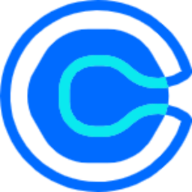4-step playbook: How to build an audience in 2025, according to Greg Isenberg
Learn Greg Isenberg's four-step playbook for building a loyal audience in 2025, from identifying your niche to creating systems that ensure consistency.

Building an engaged audience is increasingly crucial for businesses and creators looking to gain traction in today's digital landscape. Greg Isenberg, founder of Late Checkout (a portfolio of internet companies), recently shared his comprehensive four-step playbook for building an audience in 2025.
Isenberg, whose X (formerly Twitter) account has generated 171 million impressions and nearly 900,000 bookmarks in the past year alone, discussed his audience-building framework with Jonathan Courtney, founder of digital product design agency AJ&Smart, on The Startup Ideas Podcast.
The ACP framework: Prioritize audience before product
At the core of Isenberg's approach is what he calls the "ACP framework" — Audience, Community, Product — which inverts the traditional business-building process most founders follow.
"I've bet my entire career on this framework and built all my businesses around it," says Isenberg. Rather than starting with a product and searching for customers, he advocates first identifying and growing an audience, then nurturing that into a community, and only afterward developing products.
According to Isenberg, this audience-first approach gives founders significantly more options and confidence when launching. "There's nothing more soul-destroying than launching something and zero people using it," he explains.
This view aligns with current marketing trends. According to research from the Digital Marketing Institute, 90% of marketers say building an online community is critical for success[1], highlighting the importance of establishing audience connections before product development.
The 4-step playbook for building an audience in 2025
Step 1: Identify who you're creating for
Isenberg emphasizes the importance of clearly defining your target audience. His approach includes:
- Focus on a specific niche you're passionate about
- Understand what your potential audience isn't getting from others
- Find your unique "sauce" (Isenberg shares all his startup ideas openly)
- If engagement is low, start broader than your niche and gradually narrow focus
Courtney reinforced this with his own example: "We wanted to be known for design sprints, but it wasn't an interesting topic on the internet in 2016. Eventually, we started with broader UX content to build an audience first."
Research supports this approach. According to an Influencer Marketing Hub benchmark report, 68% of marketing execs now use AI regularly in operations to help identify audience needs[2], making it easier to spot underserved niches.

Step 2: Find your format
Format—how you deliver content—is often overlooked but crucial for audience building. Isenberg's strategies include:
- Test one format per business day until you find what works
- Look for formats outside your niche (avoid saturated approaches)
- Consider what's working platform-wide (short-form video dominates in 2025)
- Focus on what feels natural and enjoyable to maintain consistency
- Test formats for 90 days and let data guide your decisions
"Remember that formats have life cycles," Isenberg warns. "What works today might not work in six months."
This aligns with current content trends. A recent report shows that 91% of businesses now use video as a marketing tool, with 92% of video marketers reporting positive ROI[3].
Step 3: Build systems that stick
Creating systems is essential to maintain consistency in audience-building:
- Develop a "creative faucet" routine (identify what generates ideas)
- Implement an ideas capture system (Isenberg uses Apple Notes)
- Schedule weekly time to transform ideas into content
- Be strategic with timing to match audience behavior
- Consider joining trending conversations when relevant
Step 4: Set one primary goal
The final step is setting a clear, singular goal for your audience-building efforts:
- Choose one primary metric (e.g., reaching 100,000 followers in 12 months)
- Measure format effectiveness against this specific goal
- Track progress every 90 days
- Optimize for your goal, not vanity metrics
"Attention is scarce," Isenberg emphasizes. "Build it as an asset, treat your content like a product, and approach it with the same rigor you'd bring to a job."

The audience as insurance policy
Both Isenberg and Courtney highlight the long-term value of building an audience:
- Business insurance: "I think the number one reason why anyone should create an audience is to have something to fall back on. It's insurance," says Isenberg.
- Career flexibility: With an established audience, you can more easily launch new products, find employment opportunities, or generate revenue through various channels if needed.
- Market understanding: Building an audience provides deeper insights into your niche, helping you understand what people truly want and need.
- Trust foundation: An audience that trusts you will more likely support your future endeavors.
Courtney shared how his relatively modest audience-building efforts still paid dividends: "I half-ass ran [my blog] for the last two or three years. Even with that audience, because my niche was business owners making more than a million already, I was able to run an event that brought in around $7,000."
Getting started: The "reply guy" strategy
For those feeling overwhelmed, Isenberg recommends starting small by becoming active on X: "X is the best place to start because it allows you to experiment with formats. Being a 'reply guy' is probably what you should do for like 90 days to see if it's working."
This approach has several advantages:
- Less pressure than posting on your own profile
- Allows you to experiment with different formats
- Helps build connections with established creators
- Builds confidence before creating original content
The strategy aligns with current social media behavior. According to HubSpot's Social Media Trends Survey, users who engage with existing conversations before creating original content tend to build more sustainable audiences.
Starting your audience-building journey
Isenberg emphasizes that building an audience needn't happen overnight. "I started Twitter almost 20 years ago. It took me until 2020 to get to 10,000 followers, and I only really skyrocketed in 2020."
The key, according to both Isenberg and Courtney, is simply to start—even if imperfectly. As Courtney notes, "Originality is not the goal in the beginning. You're going to accidentally become original by just being yourself and having your own life experiences."
Sources
- HubSpot (Marketing Statistics) HubSpot. (n.d.). Marketing statistics, trends, and data to help you make smarter decisions. https://www.hubspot.com/marketing-statistics
- Brafton (AI Marketing Survey) Brafton. (2024, February 8). AI marketing survey: Marketing in the age of AI. https://www.brafton.com/blog/brafton-research-lab/ai-marketing-survey-marketing-in-the-age-of-ai/
- Vidico (Video Marketing Statistics) Vidico. (n.d.). Video marketing statistics. https://vidico.com/news/video-marketing-statistics/





